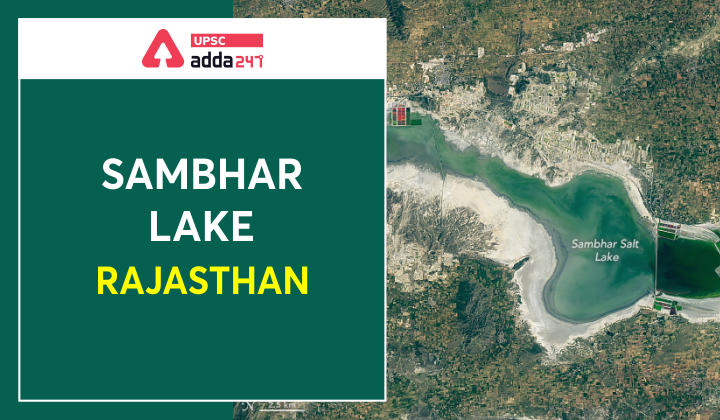Table of Contents
Relevance
- GS Paper 3: Environment: Conservation, environmental pollution, and degradation.
Get free video for UPSC CSE preparation and make your dream of becoming an IAS/IPS/IRS a reality
Context
- Recently, an expert study on the Sambhar lake’s ecology found that the Sambhar Lake is shrinking with degradation of soil and water quality.
- The study also found that there is a decline in the population of migratory birds in Sambhar Lake.
- The research team has recommended urgent action to restore the Sambhar lake’s ecosystem for protecting the birds and biodiversity as well as the salt production.
About Sambhar Lake
- Location: Sambhar Lake is situated 80 km south-west of Jaipur, Rajasthan.
- Sambhar Lake is the country’s largest inland saline water body which attracts thousands of migratory birds every year.
- It represents the depression of the Aravalli Range.
- The water source of Sambhar Lake: It receives water from six rivers, namely Samaod, Khari, Mantha, Khandela, Medtha, and Roopangarh.
- Economic Importance of Sambhar Lake: It is the source of most of Rajasthan’s salt production. It produces 196,000 tonnes of clean salt every year.
List of Ramsar Wetland Sites in India
Biodiversity of Sambhar Lake
- Ecological Importance of Sambhar Lake: It has been designated as a Ramsar site (recognized wetland of international importance).
- It is an important wintering area for flamingos and other birds that migrate from northern Asia.
- Vegetation around Sambhar Lake: The vegetation present in the catchment area is mostly xerophytic type (plants adapted for growth under dry conditions.
- Fauna Diversity in Sambhar Lake: commonly sighted birds at Sambhar Lake include Flamingoes, pelicans, and waterfowls.
- In 2019, almost 22,000 migratory birds died at the Lake due to avian botulism
- The Indian Veterinary Research Institute (IVRI), Uttar Pradesh confirmed avian botulism as the reason for the mass mortality of birds, at Sambhar Lake in Rajasthan.
Wetland Ecosystem: Importance, Concerns and Conservation Measure
Additional Information
- Avian botulism: Avian botulism is a neuro-muscular illness caused by Botulinum (natural toxin) that is produced by a bacteria called Clostridium botulinum.
- Source of this Bacteria: commonly found in the soil, rivers, and seawater. It affects both humans and animals.
- It affects the nervous system of birds, leading to paralysis in their legs and wings.




 TSPSC Group 1 Question Paper 2024, Downl...
TSPSC Group 1 Question Paper 2024, Downl...
 TSPSC Group 1 Answer key 2024 Out, Downl...
TSPSC Group 1 Answer key 2024 Out, Downl...
 UPSC Prelims 2024 Question Paper, Downlo...
UPSC Prelims 2024 Question Paper, Downlo...




